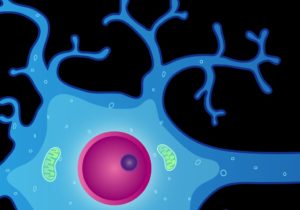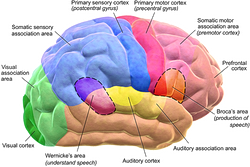
The quest to lose weight is an exhausting task that can go on for days on end. Obese people try everything in their power to burn layers of fat on as quickly as possible, but alas! It’s a time-consuming process. As easy as it is to gain weight, shedding it can be quite a piece of work. And during the trying times when a person is working hard towards their body goals, they always try to find potions to weasel their way into the land of slenderness. And much to the chagrin of trainers and dieticians, the internet serves multiple untested shortcuts to weight loss. Out of all those unreliable schemes, the one that stands out the most is green tea. With that said, green tea might not be as unreliable as the other dubious shortcuts that obese people are bombarded with.
Green tea is famous for helping with cardiac conditions and also known for weight loss, and even experts are in favor of using the green elixir to accelerate weight loss. But what is the science behind the apparent benefits of green tea? Is it helpful, or is it just a hoax that tea manufacturers use to sell their products? Let’s find out.
Caffeine in Green Tea
Even though the caffeine content in green isn’t as high as coffee, that is enough to stimulate fat-burning in the body.
Caffeine is a well-known stimulant that has proven to aid weight loss in the body. It is due to the fat-burning properties of caffeine that experts advise obese people to consume black coffee when trying to lose weight.
Green tea contains active compounds such as EGCG, those along with caffeine are supposed to help people in their quest to get in shape and lose unhealthy pounds in their body combined with other weight loss techniques.
EGCG in Green Tea
Green tea is high in EGCG (epigallocatechin gallate), which is believed to promote and aid fat breakdown. Accumulated fat needs to break down into fat cells that are later used as energy packets to carry out essential bodily functions.
Fat breakdown in the body is brought about when fat-burning hormones such as norepinephrine (noradrenaline) disintegrate long fatty chains and reduce them into cells that are released into the blood. EGCG in green tea boosts the effects of fat-burning hormones that accelerate the entire process of fat breakdown.
EGCG released from consuming green tea inhibits enzymes that promote the activity carried by these hormones. Ultimately, the broken down fat is released into the bloodstream as used by different organs and cells in the body.
Green Tea Helps Fat Burning During Workouts

If you have ever tried a fat-burning supplement, then you must have seen green tea extracts on its label. That is because green tea is charged with active compounds that help fat burning, especially during exercise.
According to a study, men who consumed the tea extracts combined with regular exercise burned 17% more body fat than men who didn’t drink green tea extracts. A bunch of other studies also indicate that active compounds in green tea stimulate fat burning when taken with exercise.
Green Tea Boosts Metabolism
A person’s body is constantly using up calories even when there is no physically strenuous activity. Our body is conducting multiple processes at all times, which require energy and that can be acquired from calories.
Many studies suggest that chemical compounds in green tea train the body into getting the needed energy for bodily processes from excess calories. EGCG in green tea helps burn calories even when your body is at rest.
Studies show that green tea supplements can increase the burning percentage by 3-4% and, in some cases, by 8%. However, more research is required to make a definitive claim regarding the ability of green tea to burn these calories even when the body is at rest.
Green Tea Curbs Appetite
Green tea helps weight loss by reducing a person’s appetite. That is, after consuming it, people don’t eat as much as they did before. Hence, they consume fewer calories overall, which can help widen the calorie deficit and lead to weight loss.
Weight loss is typically achieved by creating a calorie deficit in the body. A person trying to lose weight brings down their daily intake of calories or burn more calories in order to create a calorie shortfall. By creating a deficit, the body uses up stored fat in the body to meet its energy requirements, which brings down body fat and reduces weight.
When a person drinks green tea, they eat less than they used to before including green tea in their diet. And as a result, they consume fewer calories, which forces the body to use unwanted fat to get energy for various processes.
In a nutshell, green tea increases calorie expenditure in the body.
Green Tea Helps a Person Lose Belly Fat
Most people who are prompted to lose weight are irked by the muffin top protruding below the torso. And sadly, belly fat is the hardest form of fat to burn away with diet and exercise. However, green tea can help a person get rid of that paunch that they dislike so much.
There are two kinds of fat in the body. One is subcutaneous fat, and the other is visceral fat. Subcutaneous fat is the form of fat that is stored underneath the skin, while visceral fat is the fat that’s accumulated around the belly area.
While green tea may or may not be immensely useful in reducing excess pounds from the body, it does seem to be plenty helpful in burning body fat, especially visceral fat. Visceral fat doesn’t only damage the shape of one’s body, but it also increases the risk of diabetes and other such diseases by creating insulin resistance. It also increases the chances of inflammation in the body.
Having green tea regularly can save the body from developing harmful conditions by breaking down belly fat.
The Takeaway
Even though green tea shows immense promise with regard to weight loss in people, it cannot magically make you lean in a fraction of time. You need to take additional measures such as cutting down on carbs and increasing your protein intake to lose weight quicker.


 According to the experts at the University of Maryland Medical Center, ginseng is an adaptogen. Adaptogens are herbal substances that help stabilize the physiological processes that take place inside the body and promote
According to the experts at the University of Maryland Medical Center, ginseng is an adaptogen. Adaptogens are herbal substances that help stabilize the physiological processes that take place inside the body and promote  Flu is a common ailment that people face during seasonal changes and with the ongoing
Flu is a common ailment that people face during seasonal changes and with the ongoing  Even though people are increasingly indulging more and more in regular workout regimens, there is still a significant number of people who live a sedentary life, which makes them susceptible to multiple health problems. Furthermore, the lack of activity in the lives of such people makes them weak and lethargic. Drinking ginseng tea can help those who lack energy in their lives.
Even though people are increasingly indulging more and more in regular workout regimens, there is still a significant number of people who live a sedentary life, which makes them susceptible to multiple health problems. Furthermore, the lack of activity in the lives of such people makes them weak and lethargic. Drinking ginseng tea can help those who lack energy in their lives.






 Turmeric contains bioactive compounds called
Turmeric contains bioactive compounds called 






 Deep frying is commonly used for cooking at both home and fast food restaurants because it is a less expensive method of preparing a dish.
Deep frying is commonly used for cooking at both home and fast food restaurants because it is a less expensive method of preparing a dish.
 Many people underestimate the significance of foods that uplift the mood. A good demeanor is not just a fleeting mental phenomenon. By keeping your mood good, you can mitigate the effects of chronic stress. Mood also helps alleviate the symptoms of depression and anxiety. In short, how your mood fares affect your mental health and consequently dictates the quality of your life.
Many people underestimate the significance of foods that uplift the mood. A good demeanor is not just a fleeting mental phenomenon. By keeping your mood good, you can mitigate the effects of chronic stress. Mood also helps alleviate the symptoms of depression and anxiety. In short, how your mood fares affect your mental health and consequently dictates the quality of your life. 
 For many years,
For many years, 
 What is Processed Meat?
What is Processed Meat? Fresh meat consists of proteins, fats, and water. When the meat is processed, the components change, which in turn transform how the meat is digested and assimilated in our bodies.
Fresh meat consists of proteins, fats, and water. When the meat is processed, the components change, which in turn transform how the meat is digested and assimilated in our bodies.  Certain chemicals such as N-Nitroso compounds and polycyclic hydrocarbons, which are carcinogenic in nature, are produced during the production of processed meats. Cooking processed meats also produces heterocyclic aromatic amines as well as polycyclic aromatic hydrocarbons which are found in air pollution. Furthermore, nitrite and nitrate preservatives used to increase the shelf life of processed meats also release chemicals upon digestion that can lead to bowel cancer.
Certain chemicals such as N-Nitroso compounds and polycyclic hydrocarbons, which are carcinogenic in nature, are produced during the production of processed meats. Cooking processed meats also produces heterocyclic aromatic amines as well as polycyclic aromatic hydrocarbons which are found in air pollution. Furthermore, nitrite and nitrate preservatives used to increase the shelf life of processed meats also release chemicals upon digestion that can lead to bowel cancer. 
